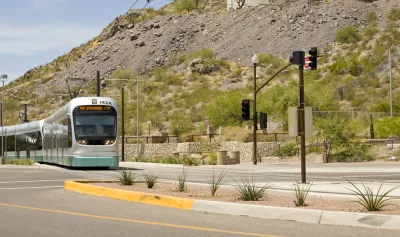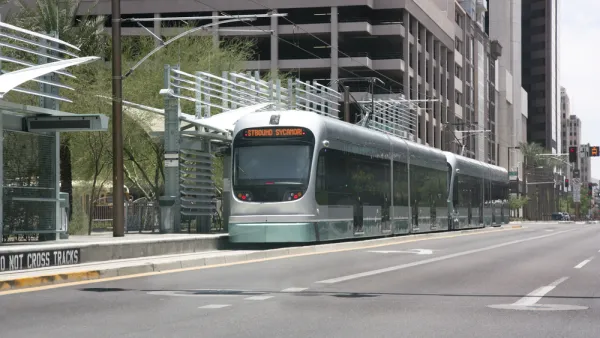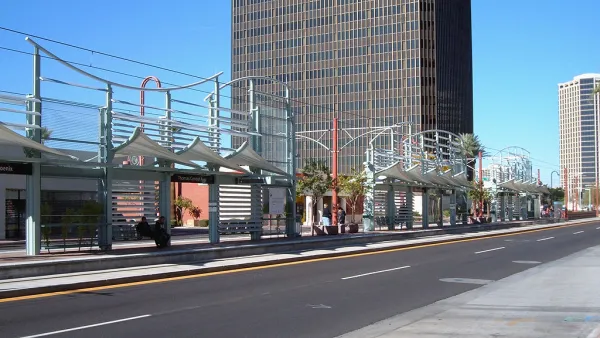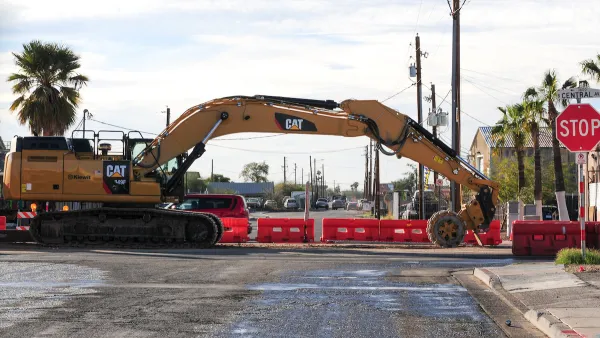A big feature story celebrates the first ten years of Valley Metro Rail.

"Ten years ago, on an unusually frosty Phoenix morning, the Valley's most important dignitaries unveiled one of the most expensive and controversial taxpayer-funded projects in Arizona history," according to the lede of a feature article by Jessica Boehm.
The feature includes ten chapters, ranging from an evaluating of system performance to the politics of local support and federal funding. The "mixed results" reported in the article include the following:
- "The rail system almost immediately exceeded its target ridership numbers, and today has an average weekday ridership of about 50,000, a number Valley Metro didn't expect to reach until 2020."
- "Valley Metro estimates $11 billion in private and public investment has sprouted within a half mile of the light-rail line since 2008."
According to Boehm, political forces are coalescing in the city to block any additional expansion of the system, despite dedicated tax revenue devoted to capital investments.
The article includes a lot more history and assessments of the present and future of light rail in Phoenix.
FULL STORY: 10 years and $2B later, what is the future of light rail in metro Phoenix?

National Parks Layoffs Will Cause Communities to Lose Billions
Thousands of essential park workers were laid off this week, just before the busy spring break season.

Retro-silient?: America’s First “Eco-burb,” The Woodlands Turns 50
A master-planned community north of Houston offers lessons on green infrastructure and resilient design, but falls short of its founder’s lofty affordability and walkability goals.

Delivering for America Plan Will Downgrade Mail Service in at Least 49.5 Percent of Zip Codes
Republican and Democrat lawmakers criticize the plan for its disproportionate negative impact on rural communities.

Test News Post 1
This is a summary

Test News Headline 46
Test for the image on the front page.

Balancing Bombs and Butterflies: How the National Guard Protects a Rare Species
The National Guard at Fort Indiantown Gap uses GIS technology and land management strategies to balance military training with conservation efforts, ensuring the survival of the rare eastern regal fritillary butterfly.
Urban Design for Planners 1: Software Tools
This six-course series explores essential urban design concepts using open source software and equips planners with the tools they need to participate fully in the urban design process.
Planning for Universal Design
Learn the tools for implementing Universal Design in planning regulations.
EMC Planning Group, Inc.
Planetizen
Planetizen
Mpact (formerly Rail~Volution)
Great Falls Development Authority, Inc.
HUDs Office of Policy Development and Research
NYU Wagner Graduate School of Public Service





























